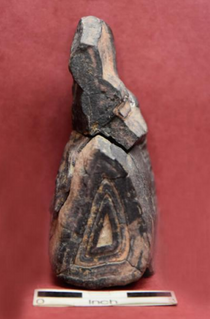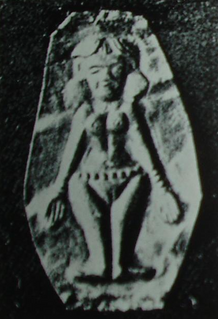Goddesses in pre-Vedic India
Before the Vedic period, India had a civilization that we now call the Indus Valley Civilization or Harappan Civilization. This civilization thrived from about 3300 BCE to 1300 BCE and was centered around agriculture and trade. We know quite a bit about their society, but we don't fully understand their religion. From the evidence left behind by this civilization, we can tell that they believed in multiple gods and goddesses, and they worshiped them through various rituals and offerings. The prominent religious icons were of the "mother goddesses" who represented fertility and were important aspect of Harappan culture.
Archaeological findings suggest that goddesses have been venerated in Indian culture since ancient times. The people of that era recognized the concept of an Earth goddess, which represented the divine feminine and was closely linked with fertility. These goddesses were often represented by stones, and the culture of that time saw natural energy as a feminine principle. In the Son valley of Madhya Pradesh's Sidhi district, in a place called Baghor, triangular stones were discovered with fragments of a natural ferruginous stone forming concentric triangular lines. The fragment exhibited distinctive colors, ranging from light yellowish-red to dark reddish-brown in alternating sections. These stones are thought to have been worshipped 11,000 years ago (BP) by the hunter-gatherers of the Paleolithic period, and local inhabitants still worship similar stones in the Son area, according to Ethnoarchaeological studies. The stones found in Baghor are very similar to yantras, which are currently used to worship Hindu deities.
In the Son valley of Madhya Pradesh’s Sidhi district, there were triangular stones discovered in Baghor that contained fragments of natural ferruginous stone forming concentric triangular lines. These stones were worshipped 11,000 years ago by the palaeolithic hunter-gatherers who identified them as a representation of the Mother goddess. These stones are still worshipped today in the Son area, and they resemble the yantras currently used for deity worship.
Moving on to Mehrgarh, located on the Kacchi Plain of Pakistan, one of the earliest sites with evidence of farming and herding in South Asia, figures of the Mother goddess were discovered in a seated position with featureless faces and large eyes prior to 2500 BCE. After 2500 BCE, standing figures emerged, with some of them holding a child.
In southern Balochistan in Pakistan, two ancient peasant communities, Kulli and Zhob, also demonstrated the presence of the Mother Goddess. The Kulli figures were adorned with jewelry, had their arms over their breasts, and feature bird-like faces with the figures ending at the bottom of the torso. The Zhob figures were of a later date and had a hood-like head covering, and their faces appeared unusual with a high forehead, beaked nose, and large eyes.
During the Harappan culture, there was an emergence of organized urban settlements, such as Harappa and Mohenjo-Daro, which are believed to have served as centers for trade. These cities likely had connections with surrounding rural communities, which may have influenced the incorporation of the Mother goddess from peasant communities into Harappan culture. Excavations at sites such as Harappa and Mohenjo-Daro have revealed numerous images of Mother Goddesses, with some depicted holding a child or in a pregnant state. It's possible that such images were created to aid in the process of childbirth or to ensure the well-being of offspring. Furthermore, an oblong seal from Mohenjo-Daro depicts a nude female figure upside down with legs apart and vegetation sprouting from her body. This female deity is likely to be the Earth goddess associated with vegetation growth.
Throughout history, the representation of the Mother goddess continued even after the end of the Harappan civilization. In Inamgaon, an agrarian village in Maharashtra, two headless figures of a mother goddess with a bull were discovered, dated to around 1300 BCE. The figurines were in the shape of a human silhouette with notable breasts, which symbolized her maternal role.
In Adichannalur, Tirunelveli (Tamil Nadu), a bronze Mother goddess was excavated, dated to around 1000 BCE. The idol's bulky appearance with female features may have been a representation of a fertility goddess. Its appearance bears a resemblance to present-day Toda women, a tribe in Nilgiris, Tamil Nadu.
Moreover, a small gold plate that dates back to around 800 BCE was excavated at a burial pile in Lauriya Nandangarh, Bihar. The plate depicted a nude female figure with a beaded belt and large earrings. It is tentatively identified with Vedic Goddess Aditi or Prithivi.











